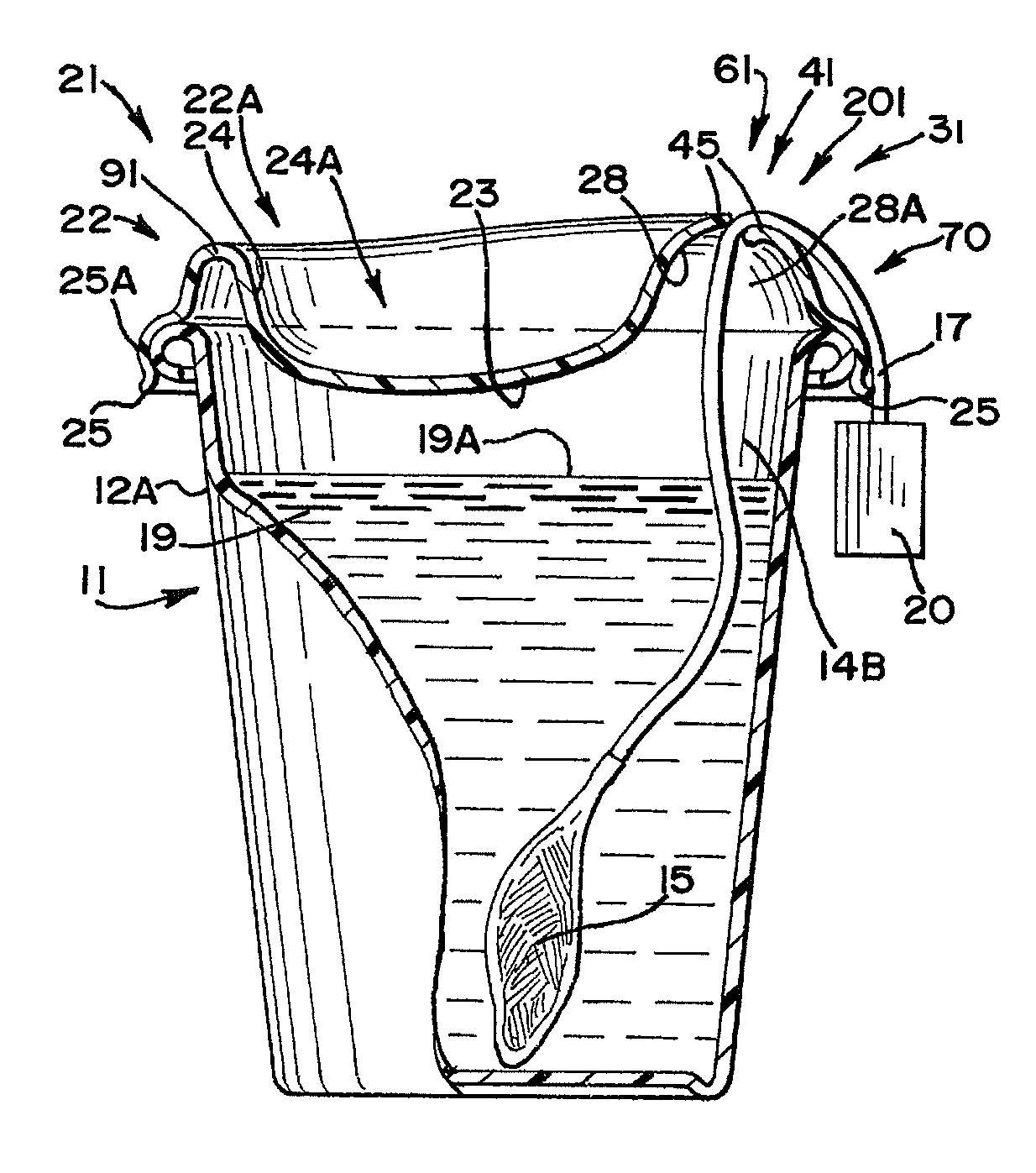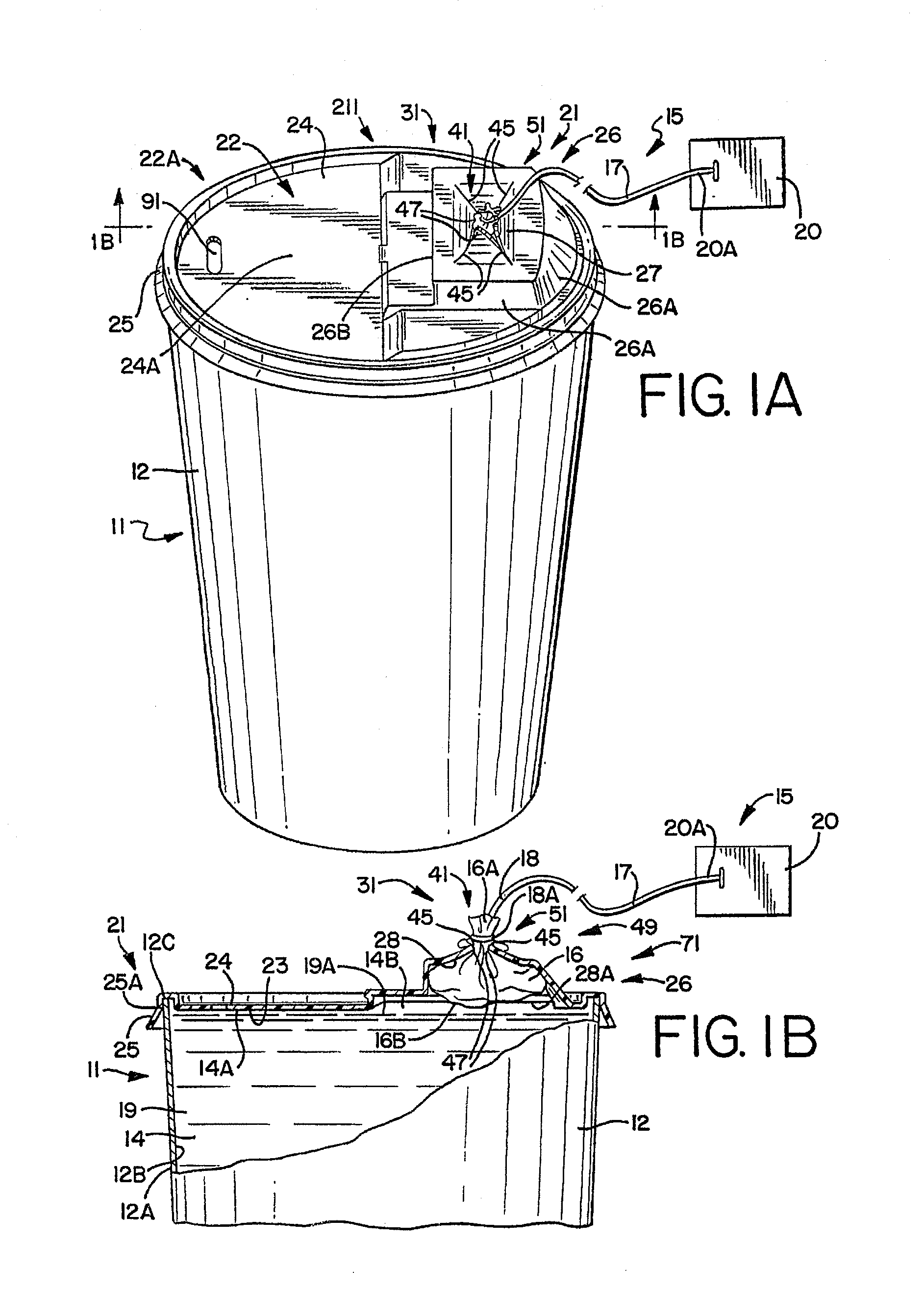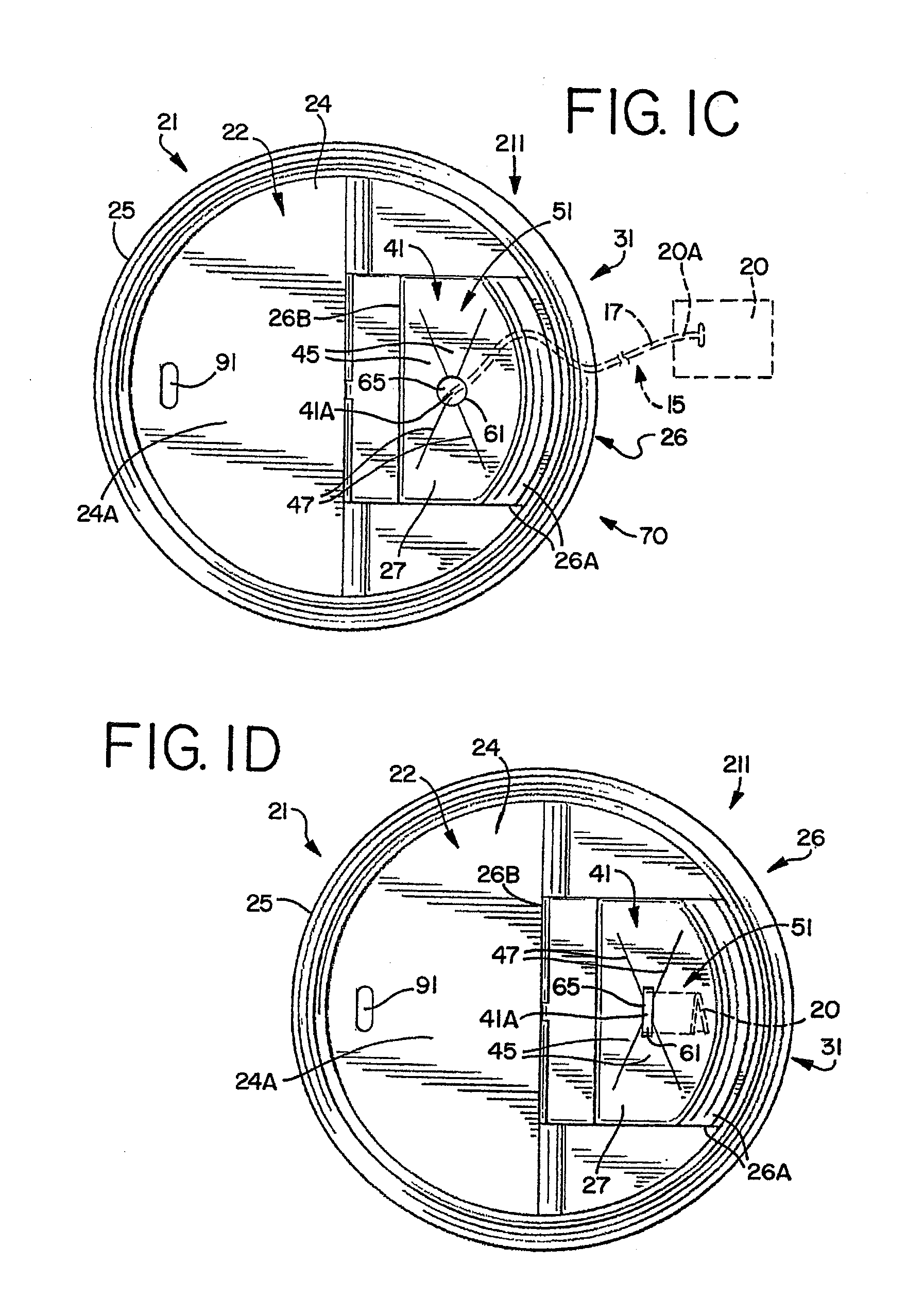During the immersion process, and if the bag contents are a “non-instant” version of a dry or dried substance, such as
ground coffee or leaf or shredded tea, the contents take up the liquid, thereby swelling in size and increasing in weight.
However, particularly with regard to tea, it is generally imperative that the bag not be allowed to remain in the liquid too long since the tea may become overly strong or bitter components from the tea may become solubilized.
Also, the beverage cannot be consumed with the combination cover / container in place.
This device does not provide the means by which a
consumer may sample the liquid or consume the beverage without removing the device and therefore stopping the infusion process.
The device does not provide the means by which the removed tea bag can be sanitarily stored or positioned adjacent to the container or without having to find an additional place to discard it.
Furthermore, because this tea
brewing device allows only a portion of the tea bag to be suspended below the disc, tea can be brewed only in those containers in which the level of the liquid is generally close to the rim.
Attempting to brew tea in such a container may be dangerous since some cups—particularly those disposable cups having the typical small base and outwardly flaring surrounding wall—may become top heavy and prone to tip over when filled to such a level.
Also, liquid at such a level may more easily splash out from openings in the cover and injure the
consumer and / or require clean-up.
As a result, such a cup would not likely be used by those on the go and not, for example, without the container and device positioned on a stable surface.
Because the suspending member permits tea to be brewed only when the cup is sufficiently filled with liquid so as to cover the horizontally aligned tea bag, the cup filled as necessary with suspending member and tea bag in place may be top heavy and therefore prone to tipping over.
As the cup lid does not provide the means by which the beverage may be consumed with the lid in place on the container, the lid together with the bag must be removed and discarded.
A container on which the cup lid is fitted and with a wet tea bag drawn up into the
flange may be top heavy and prone to tip over and therefore dangerous.
No means are provided for the storage of the infusion bag adjacent to the level of the beverage after the bag is removed.
Other lids do not provide such drink through apertures.
The applicant's own co-pending application Ser. No. 08 / 529,061 filed on Sep. 15, 1995, and for which U.S. Pat. No. 5,657,898 was granted on Aug. 19, 1997 teaches an upwardly extending protrusion forming a retaining chamber into which a filter bag may be drawn and having an aperture that, due to its small size, does not allow the bag to be easily extricated there through.
A number of disadvantages are associated with the conventional apparatus and systems intended to facilitate the consumption of beverages from a cup.
Many are complicated structures that are relatively costly to manufacture and use.
Many such apparatus and systems do not readily stack thereby making them more costly to ship and store.
Some conventional preparation apparatus typically do not allow beverages to be produced quickly but instead require extensive, pre-use preparations and / or a series of manipulations so that the apparatus may be operated as intended.
Such complications limit the usefulness of the apparatus in circumstances where the preparer has a limited amount of time to spend on the preparation process such as in a carry-out food and / or beverage operation.
Many conventional preparation apparatus typically do not allow beverages to be produced from a conventional beverage bag.
Such cover / bag combinations limit the type of beverages that may be made with the apparatus.
Other conventional preparation apparatus and conventional beverage cups or other containers do not provide the means by which a bag can be held in place relative to the liquid during the
steeping process and even when the beverage is being consumed.
Many conventional preparation apparatus grip or have secured to it one portion of the walls of the conventional sized beverage bags such that the distance at which any portion of the beverage bag can extend below the surface of the apparatus is not freely adjustable.
As a result, such conventional apparatus cannot be used to prepare a beverage in containers in which the liquid level cannot be brought close enough to the rim of the container so that the beverage bag can actually contact the liquid.
When such conventional preparation apparatus are fitted on a conventional container that allows the liquid to be brought to nearly the mouth of the container, a dangerous situation may develop.
The liquid may more easily splash out from any openings in the conventional apparatus and, if hot, injure the person preparing, serving, or consuming the beverage and / or require clean-up.
If the container that is filled has a conventional shape with small base area and an outwardly flaring surrounding wall, the container as filled nearly to the top can become more top heavy and more prone to tip over.
As a result, such conventional preparation apparatus should not likely be used by those on the go and not, for example, without the container and apparatus being positioned on a stable surface.
Also, such conventional apparatus do not allow the gripped or attached bag to be moved relative to the depth or other inner shape of the container.
This limits the usefulness of such conventional apparatus.
The failure to provide a quick and convenient sanitary storage place for the used bag with or on the cup in which the beverage is produced increases the likelihood that additional
clean up will be necessitated.
Also, conventional apparatus that fail to provide such sanitary storage cannot be easily used by an individual on the go without at least the bag being improperly discarded.
 Login to View More
Login to View More  Login to View More
Login to View More 


